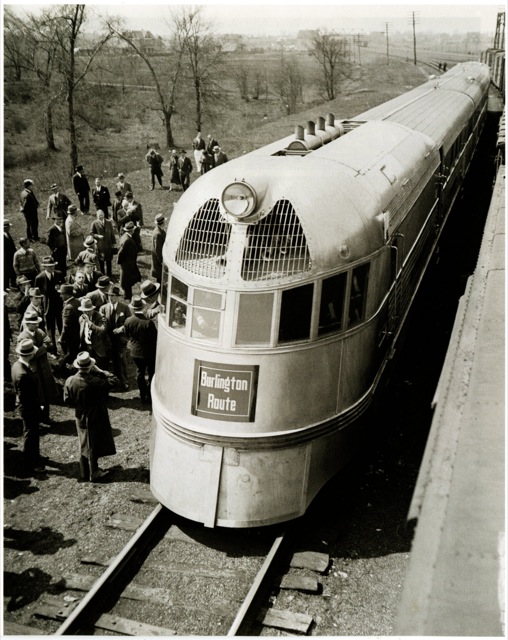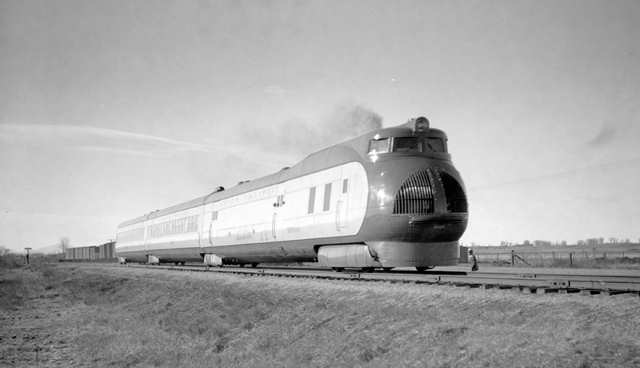On paper, the Burlington Zephyr was very similar to the Union Pacific M-10000. Both were lightweight, three-car trains powered by 600-horsepower internal combustion motors; both rode on articulated trucks (meaning adjacent cars shared wheel sets); both were smaller in profile than regular passenger cars.
Click on most images for a larger version.
Yet the differences between the two trains were almost as substantial as the similarities. With its resemblance to the 1934 Chrysler Airflow, the M-10000 certainly had “modern” styling, yet it looks dated today. The Zephyr, however, looks as fresh and modern today as it did in 1934. Indeed, some recent passenger locomotives have similar, if less elegant, shovel noses. The gleaming stainless steel left the brown-nosed M-10000 in the shadows. Technically, the Zephyr’s use of stainless steel and Diesel power put it a generation ahead of the M-10000.


